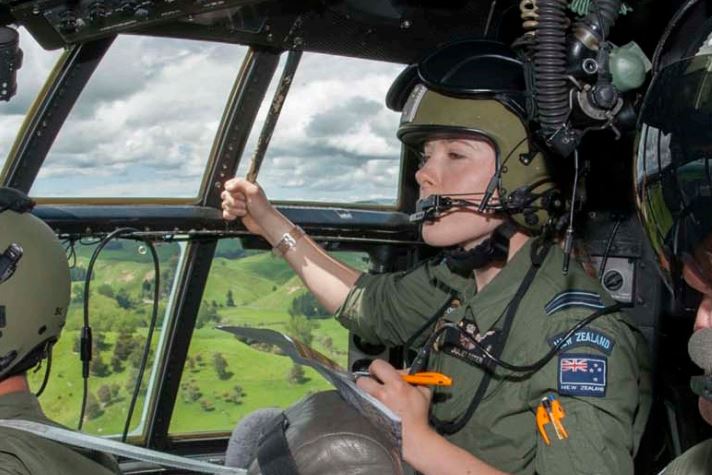
From 2014 through to today, a commendable number of
Strategist articles have focused on the women, peace and security agenda. One of those articles was mine. In 2020, I asked if New Zealand really could claim with some credibility to
be a WPS champion (spoiler alert: there was much more rhetoric than reality in play). Since then, things have worsened rather than improved in New Zealand—bucking some contrastingly positive trends in the region.
Resting on assumed laurels, New Zealand had already been late to the fray in producing its first national action plan in 2015. The plan focused mainly listed achievements already made rather than identifying new areas to support, and, despite loudhailer claims that New Zealand ‘championed’ WPS, it was clear that this first NAP had some significant shortcomings. Even more embarrassing, however, is the fact that New Zealand is yet to produce a second NAP. The first ran out in 2019; it is now 2023, and New Zealand is being left behind.
Partners such as
Australia and the
US have upped their game in their second and third iterations, respectively. ASEAN recently moved to embrace WPS in creating its
regional plan of action. Second-track diplomatic efforts have also taken up the issue of WPS in recent years, including discussion of its importance in the ASEAN Regional Forum’s work on preventive diplomacy and in a dedicated Council for Security Cooperation in the Asia Pacific
study group. Some have also suggested that WPS provides a
significant advantage in an era of strategic competition in the Indo-Pacific region, while others have noted the symbiotic relationship
between healthy democracies and gender equality. As countries begin to focus on building social cohesion in a time of disinformation, paying attention to gender issues delivers exceptional value for money.
New Zealand had been scheduled to produce a new NAP in 2020. This was of symbolic importance because that year marked the 20th anniversary of the UN Security Council’s adoption of the original WPS resolution,
resolution 1325. Frustratingly, too, one of the shortfalls of the first NAP had been a lack of consistent engagement with members of civil society—but in 2020 civil society was raring to go and keen to provide support.
In April 2020, representatives from 11 non-government organisations and academics from three of New Zealand’s eight universities attended a
workshop to prepare submissions for the forthcoming second NAP. A representative from the government’s lead WPS agency, the Ministry of Foreign Affairs and Trade, attended the workshop, while separate discussions between civil society representatives and representatives from MFAT, NZ Police, the NZ Defence Force and the Ministry for Women were also underway.
By June 2020, MFAT had disseminated a draft implementation report for New Zealand’s to summarise gains made under the first NAP and indicate areas for improvement. Civil society representatives provided extensive feedback that was incorporated into a chapter in the
final report reflecting on the first NAP, how civil society might support the WPS agenda, and suggestions for the second NAP.
In their submissions, civil society representatives noted positive increases in the numbers of women in the NZDF and Police, including increases in the number of women deployed and promoted. Consistent advocacy for WPS objectives in international forums was also commended, as was the promotion of the agenda in the Pacific through funding programs and holding events such as the WPS summit co-hosted with Samoa in 2019.
In terms of shortfalls, civil society representatives said that the first NAP didn’t clearly articulate desired outcomes, making it difficult to identify meaningful measurements of effectiveness. A lack of structured engagement with civil society was noted, as was the absence of reference to the Treaty of Waitangi (Te Tiriti o Waitangi) and integration of its principles. A lack of dedicated funding was also decried, as was the lack of regular reporting.
Concerns were also expressed about the
potential limitations of the institutional home of the NAP—noting that MFAT taking the lead on the NAP avoided identifying it as a ‘women’s issue rather than a peace and security issue’. Some submissions called for a broader approach that would recognise the impact of natural disasters, pandemics and economic pressures, while most noted the relevance and value of localising the NAP—building or leaning on grassroots networks in local sites.
Much work was thus underway in the NGO community to support the creation of a new NAP, but government agencies were also busy. The NZDF continued to support a position committed to implementing resolution 1325, sought to increase awareness through gender focal point and gender adviser training, and launched a
gender equality charter in March 2022. The Ministry of Defence began to draft a gender and security defence assessment, and MFAT was working on a
gender action plan that was launched in 2021.
Yet, although the ground was well prepared, a second NAP has not yet eventuated, and much work remains to be done. Despite other countries increasingly seeing the value of the WPS agenda, despite this agenda providing a way to ease into a range of diplomatic engagements, and despite this fitting well with the government’s foreign policy stance, New Zealand is currently NAPless. To decide to have a NAP, then to renege on that commitment, is unacceptable.
Until this is rectified, there’s a danger that New Zealand will be seen as failing to support an important security agenda that provides serious bang for the buck for a small state, and that it will miss out on the connections and opportunities that WPS provides—including being on the right side of history.
 Print This Post
Print This Post